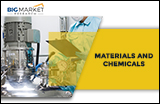
GLobal Automatic Liquid Filling Market
- MAR2978854
- 175 Pages
- December 2017
- Materials and Chemicals
Market Dynamics
The positive factors favouring the growth of the automatic liquid filling market are increased consumption of packaged liquids, focus on precision, speed and versatility in liquid filling as well as the requirement of prolonged storage which is basically the increment in the shelf life.
Now talking about the negative factors that are faced by the automatic liquid filling market, they are limited to high initial investments and training the company personnel to operate these machines efficiently.
Market Segmentation
The market for Global Automatic Liquid Filling is primarily divided by three categories, they are
1) By Liquid Used
--> Consumable Liquids
--> Industrial Liquids
--> Automobile Lubricants
2) By Type
--> Aseptic Filler
--> Rotary Filler
--> Volumetric Filler
--> Net Weight Filler
--> Piston Filler
3) By End Users
--> Food and Beverage Industry
--> Healthcare and pharmaceutical Industry
--> Cosmetic Industry
--> Logistics & Industrial Liquid Industry
Geographic Analysis
Currently the Asia-Pacific region dominates the global automatic liquid filling market. North America is expected to dominate the market in 2017 on account of growth in the biotechnology and pharmaceutical industries, rising prevalence of chronic diseases, and higher investments in genomics and proteomics research in the region.
Key Players
There are a large number of companies that are involved in this market. Some of them are mentioned below
Bosch, E-PAK Machinery, Federal Mfg., Feige Filling Gmb., Filamatic, Inline Filling Systems, Oden Machinery, P.E. LABELLERS, Xunjie Filling and Packing Machinery, Krones Group
Report Contents:
> Market segments
> Market Drivers, Restraints and Opportunities
> Market Size & Forecast 2016 to 2022
> Supply & Demand Value Chain
> Market - Current Trends
> Competition & Major Companies
> Technology and R&D Status
> Porters Five Force Analysis
> Strategic and Critical Success Factor Analysis of Key Players
Regional Analysis:
> North America
>> US and Canada
> Latin America
>> Mexico, Brazil, Argentina and Rest of Latin America
> Western Europe
>> EU5 (Germany, France, Italy, Spain, U.K.)
>> Nordic Countries (Denmark, Finland, Norway, and Sweden)
>> Benelux (Belgium, The Netherlands, and Luxembourg)
>> Rest of Western Europe
> Eastern Europe
>> Russia
>> Poland
>> Rest of Eastern Europe
> Asia Pacific
>> China
>> India
>> Japan
>> Australia and New Zealand
>> Rest of Asia Pacific
> Middle East and Africa
>> GCC countries (Saudi Arabia, Oman, Qatar, Bahrain, UAE and Kuwait)
>> South Africa
>> North Africa
>> Rest of Middle East and Africa
This report is an elaborate aggregation of primary inputs from industry experts and participants across the supply chain. It provides details on market segmentation which is derived from several product mapping exercises, macroeconomic parameters and other qualitative and quantitative insights. The impact of all such factors is delivered across multiple market segments and geographies.
Report Highlights:
> Detailed Historical Overview (Market Origins, Product Launch Timeline, etc.)
> Consumer and Pricing Analysis
> Market dynamics of the industry
> Market Segmentation
> Estimated Market Sizing in terms of volume and value
> Recent trends in Market and impact
> Research Status and Technology Overview
> Extensive Industry Structure Coverage
Similar Reports
Photonic Crystals are attractive optical materials for controlling and manipulating the flow of light. The global market for components and modules using Photonic Crystals indicates a CAGR of 33.1% and is estimated to reach $20.4 billion in 2017.
Nanomaterials possess nanoscale dimensions ranging from 1 to 100 nanometers. They occur naturally or can be engineered with specific properties such as size, shape, surface, and chemistry. Volcanic ash and forest fibers are some of the examples of natural nano...
- Publish Date: September 10, 2016
- $5820
Global molded plastics market was valued at $529,845 million in 2016, and is expected to garner $690,158 million by 2023, registering a CAGR of 3.9% from 2017 to 2023. Molded plastics are synthetically produced non-metallic compounds, which can be molded ...
- Publish Date: July 4, 2017
- $5370